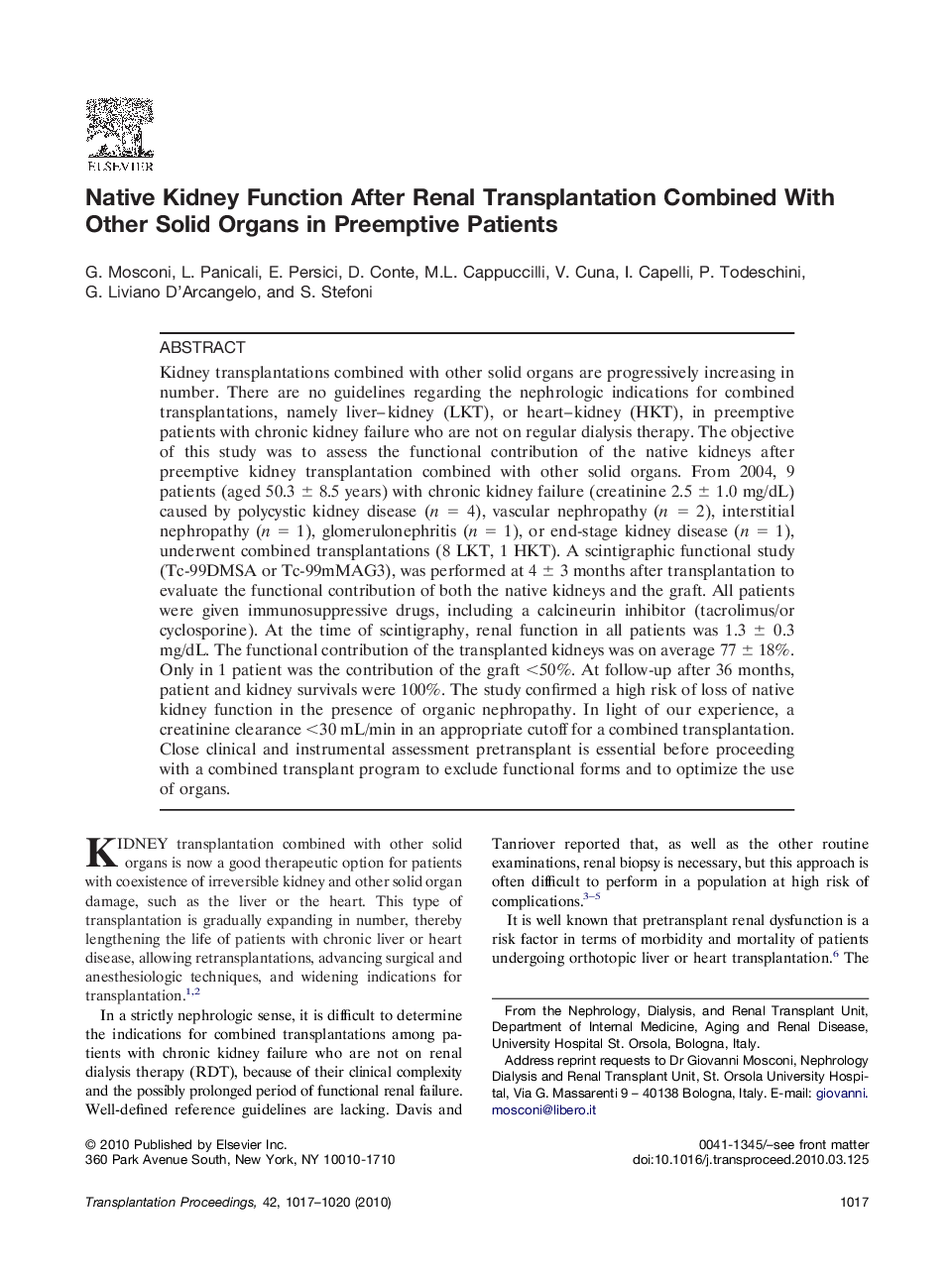| Article ID | Journal | Published Year | Pages | File Type |
|---|---|---|---|---|
| 4259579 | Transplantation Proceedings | 2010 | 4 Pages |
Kidney transplantations combined with other solid organs are progressively increasing in number. There are no guidelines regarding the nephrologic indications for combined transplantations, namely liver–kidney (LKT), or heart–kidney (HKT), in preemptive patients with chronic kidney failure who are not on regular dialysis therapy. The objective of this study was to assess the functional contribution of the native kidneys after preemptive kidney transplantation combined with other solid organs. From 2004, 9 patients (aged 50.3 ± 8.5 years) with chronic kidney failure (creatinine 2.5 ± 1.0 mg/dL) caused by polycystic kidney disease (n = 4), vascular nephropathy (n = 2), interstitial nephropathy (n = 1), glomerulonephritis (n = 1), or end-stage kidney disease (n = 1), underwent combined transplantations (8 LKT, 1 HKT). A scintigraphic functional study (Tc-99DMSA or Tc-99mMAG3), was performed at 4 ± 3 months after transplantation to evaluate the functional contribution of both the native kidneys and the graft. All patients were given immunosuppressive drugs, including a calcineurin inhibitor (tacrolimus/or cyclosporine). At the time of scintigraphy, renal function in all patients was 1.3 ± 0.3 mg/dL. The functional contribution of the transplanted kidneys was on average 77 ± 18%. Only in 1 patient was the contribution of the graft <50%. At follow-up after 36 months, patient and kidney survivals were 100%. The study confirmed a high risk of loss of native kidney function in the presence of organic nephropathy. In light of our experience, a creatinine clearance <30 mL/min in an appropriate cutoff for a combined transplantation. Close clinical and instrumental assessment pretransplant is essential before proceeding with a combined transplant program to exclude functional forms and to optimize the use of organs.
